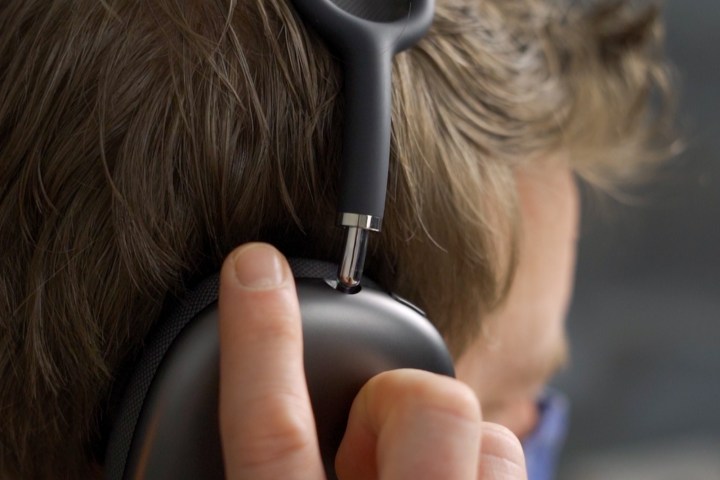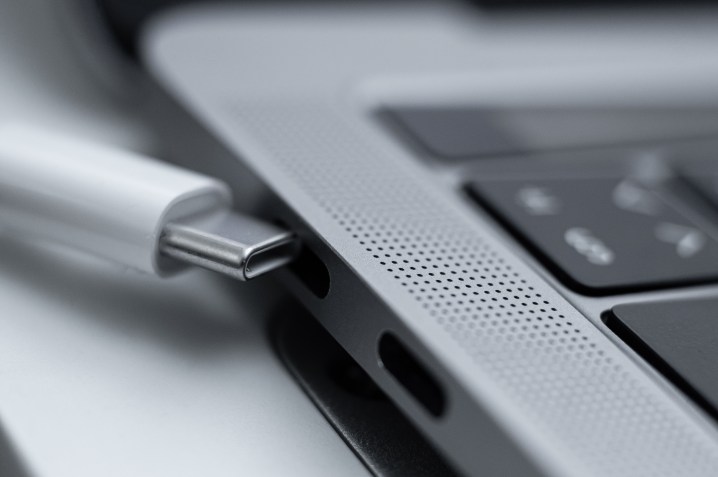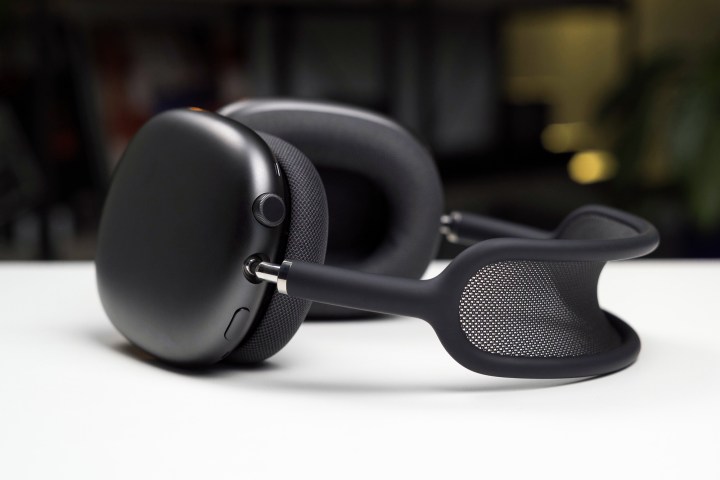Apple’s AirPods Max are a remarkable set of wireless headphones. They have superb noise cancellation, their ambient/transparency mode is the best you can get, and despite being one of the heaviest headphones on the market, they are surprisingly comfortable. But Apple has yet to address the AirPods Max’s greatest weakness: they’re a $549 set of headphones that only work with compressed, lossy digital audio.
What’s that have to do with USB-C? Everything.
The great digital divide

The AirPods Max’s problem, in a nutshell, is the way they deal with audio connections. At issue is the fact that even though the Apple Music streaming service now offers most songs in lossless audio — in some cases at a hi-res audio level of 24-bit/192kHz — there’s no way to hear the full quality of these lossless tracks on the AirPods Max.
If you listen wirelessly, the headphones rely on the AAC Bluetooth codec. AAC sounds pretty good, all things considered. But it’s still a lossy codec, which means a fair amount of the information and detail contained in a CD-quality (or better) recording has to be discarded in order to make the audio stream small enough to be transported over Bluetooth.
This isn’t a situation unique to Apple’s headphones. All Bluetooth headphones so far must use lossy compression — even if they’re equipped with a very high quality codec like Sony’s LDAC or Qualcomm’s aptX HD.
The difference is that other headphone companies acknowledge this limitation by offering users a wired connection (sometimes analog, sometimes digital) that lets them get around lossy compression by going direct to the source. Want lossless? You need a wired connection.
The AirPods Max have an optional wired connection, too, but it has to be the strangest wired connection in the headphone industry. Instead of piping analog audio straight into the headphone’s drivers so that you can use an external headphone amp and digital-to-analog converter (DAC) of your choosing, and instead of using a direct digital connection so that you can feed the headphone’s internal DAC/amp with an unadulterated lossless digital signal, Apple has used a bizarre hybrid approach.
Its $35 Lightning-to-3.5mm audio cable takes an analog signal from your source device, then converts it into a digital signal, before finally converting it back into an analog signal. (And, yes, you read that right — you have to buy that cable separately.) It’s a process that Apple has acknowledged is less than ideal when it comes to listening to lossless music, saying, “given the analog-to-digital conversion in the cable, the playback will not be completely lossless.”
USB-C to the rescue?

This illogical state of affairs raises the question of why does it exist in the first place? And what (if anything) can Apple do to fix it? I have some theories.
First, let’s get some tech stuff out of the way.
Apple’s Lightning port can’t send analog signals. We know this because if you want to use a set of analog headphones with any iPhone newer than the iPhone 7, you’ll need a Lightning-to-3.5mm headphone adapter. And if it can’t send analog signals, it follows that it can’t receive them either.
This explains why the Lightning-to-3.5mm audio cable does its analog-to-digital conversion — the signal going into the AirPods Max’s lighting port must be digital.
Apple could sell a Lightning-to-Lightning cable to deliver that digital signal, but it has never opted to do so, perhaps because you’d need a USB-A and USB-C adapter to use that cable with Apple’s other products and that starts to get messy. And Apple is all about simplicity, not messiness.
If only there were a single, compact, fully reversible connector that can handle both analog and digital audio signals, the AirPods Max’s woes would finally be put to rest. Oh wait, there is: it’s called USB-C.
USB-C is incredibly dexterous. With the right hardware behind it, it can deliver up to 90 watts of power. It can act as the interface for Thunderbolt 3/4 devices with up to 40Gbps of bandwidth. And, yes, it can manage analog and digital audio.
It’s already being used by the Master & Dynamic MW75 and the Bowers & Wilkins PX7 S2 in both digital and analog capacities, so this isn’t just theory — it works. And if Apple incorporated it into the next AirPods Max, it would give folks the best of both wired worlds: analog when people already own headphone DAC/amps that they love, and digital for when they’re content to let the headphones’ built-in circuitry do the heavy lifting.
Will Apple add USB-C to the next AirPods Max?

That’s the million-dollar question, and I think the answer is yes. But it might not happen as soon as we’d all like. Despite rolling over and adding USB-C to its MacBook Air, MacBook Pro, and select iPad models, Apple has resisted switching from its proprietary Lightning connection to USB-C on the iPhone.
Pressure from the European Union makes that switch inevitable, but not immediate. Most Apple watchers think the iPhone 14, widely expected to be announced in the fall, will still have a Lightning port.
So that makes the iPhone 15 the most likely candidate to get the USB-C port. Assuming Apple’s historical pattern of releasing a new iPhone every fall holds, that means 2023 will be the end of the line for Lightning-equipped iPhones. When that happens, there’s virtually no reason for Apple to keep using its proprietary port on any device, finally paving the way for an AirPods Max with USB-C.
What about lossless audio via wireless?
With the first headphones to use Qualcomm’s aptX Lossless Bluetooth codec now in the wild, we have officially entered a new era for portable, wireless sound quality. But if you’re hoping that Apple will add aptX Lossless to the AirPods Max while we wait for USB-C, I suspect you’ll be disappointed.
Apple has never licensed any aptX codecs from Qualcomm for the iPhone or any of its AirPods family of wireless earbuds and headphones, and I don’t expect that to change any time soon. It is, however, conceivable that Apple will do what Apple loves doing, and create a version of its AirPlay wireless technology that supports lossless audio on wireless headphones.
At the moment, AirPlay 2 supports lossless music up to 24-bit/48kHz, but only over Wi-Fi connections, not Bluetooth. A Bluetooth-compatible version of AirPlay would certainly create some interesting opportunities, but if Apple is indeed working on such a strategy, it’s likely further down its road map for the AirPods Max than USB-C.



